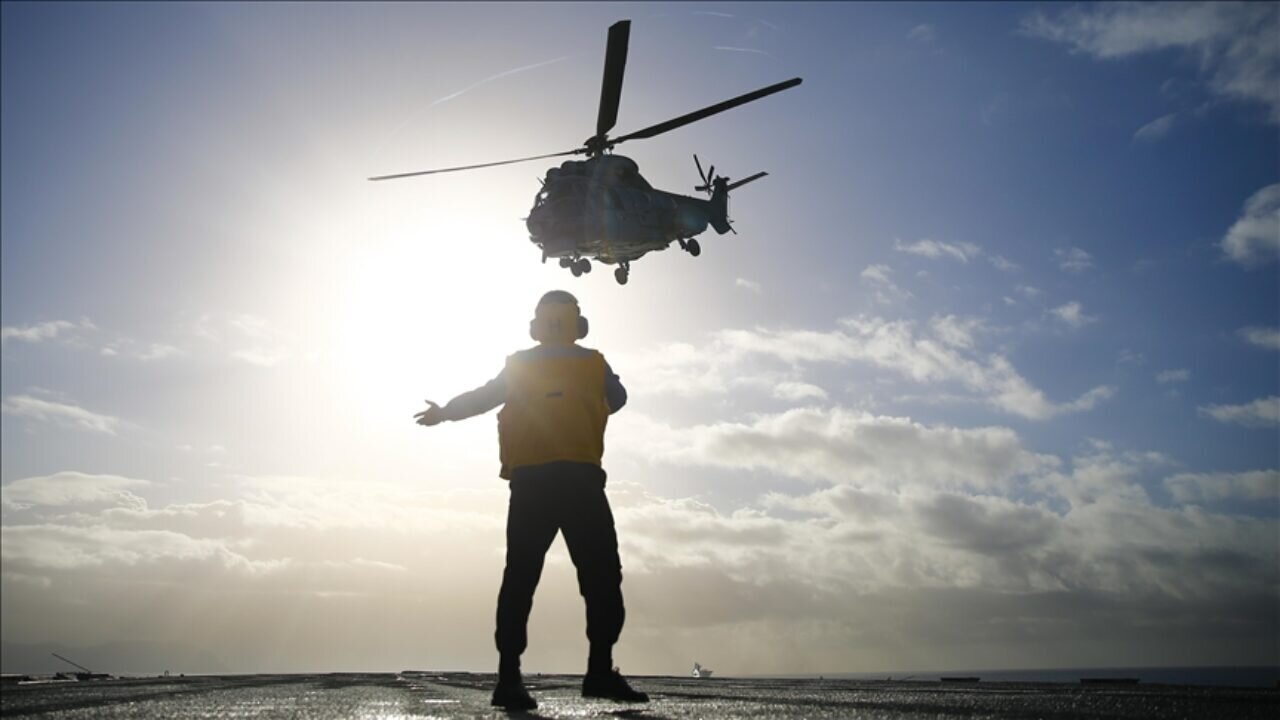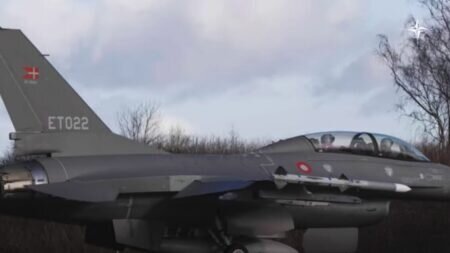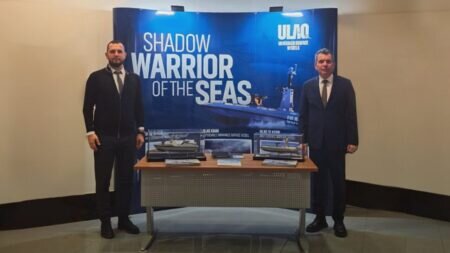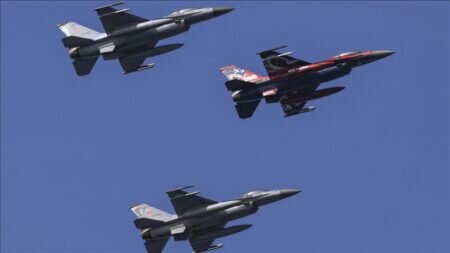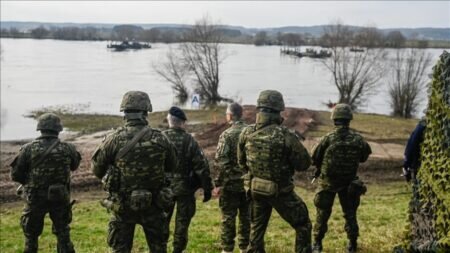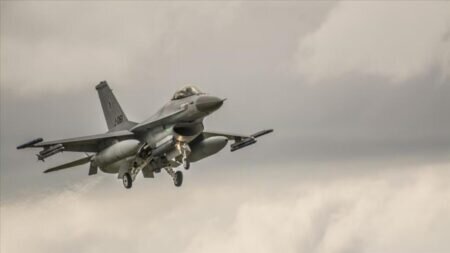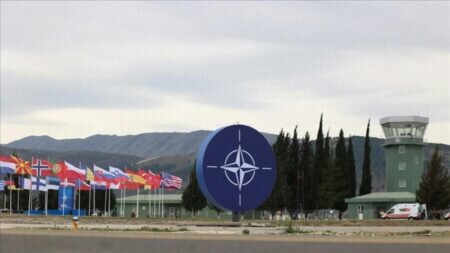The outgoing year 2023 remained hectic for the 31-nation military alliance, with a focus on strengthening defense and deterrence to support Ukraine against Russia, and it expanded for the ninth time by accepting Finland as its 31st member.
The alliance entered 2023 with Ukraine on its agenda after leaving behind the tense year in relations with Russia in 2022.
The term of NATO Secretary-General Jens Stoltenberg, who has been in office since Oct. 1, 2014, has been extended until Oct. 20, 2024, due to the prolonged war Russia-Ukraine, despite having been extended three times previously in 2022.
Stoltenberg emphasized that the security situation in Europe has permanently changed, regardless of the outcome and duration of the war, in his first statement of the year.
He stressed the need for NATO allies to invest more in defense.
Throughout the year, the blocs’ meetings focused on strengthening the alliance's defense and deterrence, as well as increasing the readiness levels of NATO forces.
NATO and allies have supported Ukraine, providing air defense systems, heavy weapons, ammunition, fuel, and communication devices.
Support to Ukraine continues
At the end of 2022, Kyiv finally received the long-awaited modern tanks. NATO allies, the US provided Abrams, the UK Challenger 2, and Germany contributed Leopard 2 tanks.
The tanks were gradually delivered to Ukraine throughout the year.
In August, the US allowed third countries to send F-16 fighter jets to Ukraine, with allies like Denmark and the Netherlands pledging to supply them.
Ukrainian pilots began F-16 training in allied countries in late summer, with the aircraft expected to be delivered in the next year after training is completed.
The NATO-Ukraine Council, established to strengthen relations, held its inaugural meeting at the leaders' level on July 12 during the Vilnius Summit and at the foreign ministers' level on Nov. 29.
Stoltenberg confirmed that Ukraine will be invited to join the alliance once the conditions are met and the war is over.
Stoltenberg, in his Dec. 14 statement on Ukraine, highlighted the "real risk" of Russian President Vladimir Putin not stopping if he gains ground. He conveyed the message that NATO will continue to support Ukraine in the coming year.
Enhanced collaboration with EU
Collaboration with the EU was given special consideration this year. As NATO and the EU share 22 common members, they signed a joint statement on Jan. 10, emphasizing cooperation against shared threats.
The joint statement emphasized cooperation against Russia and China, as well as a commitment to ongoing support for Ukraine.
On Feb. 21, Stoltenberg, EU foreign policy chief Josep Borrell, and Ukrainian Foreign Minister Dmytro Kuleba met at NATO headquarters in Brussels.
The trio discussed ways to increase ammunition production and urged NATO and EU members to prioritize supplying ammunition from their stocks to Ukraine.
They also advocated for joint procurement and increased production capacity.
NATO’s structure strengthened
Due to the war in Ukraine, NATO changed its structure and objectives.
NATO expanded its combat groups to eight countries to maintain its presence in Eastern Europe in 2023.
Around 10,000 NATO troops are spread across eight combat groups in Bulgaria, Estonia, Hungary, Latvia, Lithuania, Poland, Romania, and Slovakia.
The total number of troops under NATO command on the alliance's eastern flank has risen to 40,000.
NATO deployed AWACS airborne early warning aircraft and F-16s to Romania to enhance the alliance's airborne patrol capacity, along with previously sent fighter jets, surveillance aircraft, and tankers.
Meanwhile, in the middle of the year, NATO conducted the largest air exercise in its history.
Hosted by Germany, the "Air Defender 2023" air exercise saw the participation of over 250 aircraft and 10,000 aviation personnel from 25 countries, including Türkiye.
NATO's future planned
After Russia's illegal annexation of Crimea, NATO intensified its regional military plans, particularly in light of the Ukraine conflict.
The most significant changes to NATO's defense plans since the Cold War were approved at the NATO summit held in Vilnius on July 11-12.
At the NATO summit, plans were approved for the deployment of around 300,000 troops to NATO's eastern flank within 30 days.
The plans cover three regions: Northern and Central Europe from the Baltic to the Alps, and the area from the Mediterranean to the Black Sea.
Meanwhile, NATO officials emphasized the need for member countries to increase defense spending and defense industry production, while acknowledging that the implementation of these plans will take time.
2023 summit in Lithuania
The meeting took place in Vilnius, Lithuania's capital, with NATO leaders and Ukrainian President Volodymyr Zelenskyy in attendance.
Vilnius is about 300 kilometers (186 miles) from the Russian border, and it was the first republic to leave the Soviet Union in 1990, making the NATO meeting noteworthy.
NATO expanded for 9th time in 2023
The invitations to Sweden and Finland to the 2022 NATO summit remained on the agendas of allies throughout the year.
The "Permanent Joint Mechanism," addressing Türkiye's security concerns regarding terrorist organizations like the PKK and FETO, convened at the NATO headquarters in Brussels on March 9.
On March 30, the Turkish parliament approved the bill for Finland's NATO membership.
On April 4, during the Foreign Ministers Meeting, Türkiye submitted the document confirming Finland's NATO membership to the US, making Finland the 31st member of NATO on the Alliance's 74th anniversary.
Sweden's membership process
Tripartite meetings at both technical and high levels continued in Ankara and Brussels regarding Sweden's membership.
The fulfillment of Sweden's commitments under the Triple Memorandum was discussed at the 4th and 5th meetings of the Permanent Joint Mechanism on June 14 and July 6.
After the consensus that Sweden's NATO membership would contribute to European-Atlantic security, the Accession Protocol of Sweden was signed by President Recep Tayyip Erdogan on Oct. 23 and submitted to the Turkish parliament.
The proposal for protocol approval, signed by Turkish Parliament Speaker Numan Kurtulmus, was referred to the parliament’s Foreign Affairs Committee and approved by the Commission on Dec. 26.
1st Counterterrorism Special Coordinator
On Oct. 12, Stoltenberg appointed General Tom Goffus as NATO's first "Counterterrorism Special Coordinator," a role created to strengthen counterterrorism efforts in response to Türkiye's request, as mentioned in his statement during the Vilnius summit.
Additional troops sent to Kosovo
In response to escalating tensions in northern Kosovo in May, 30 soldiers from NATO's Kosovo Force were injured in clashes during a protest of ethnic Serbians against the winning of municipality elections.
NATO sent 700 additional troops at the end of May and 130 more at the end of Sept.
The Operational Reserve Forces, ready to deploy in seven days for the Western Balkans, were activated.
China on NATO's agenda
China, labeled a "threat" in the NATO Strategic Concept for 2022, was added to the Alliance's agenda in 2023.
Australia, New Zealand, Japan, and South Korea attended NATO meetings in April and July to discuss China-Russian cooperation.
Stoltenberg has emphasized throughout the year that China has refrained from condemning Russian aggression, supported its economy, reflected Russian propaganda, and accelerated joint military activities in the Asia-Pacific region with Russia.
He mentioned China's goal of having 1,500 nuclear warheads on missiles capable of reaching the entire North American and European continents by 2035.
Source: AA

